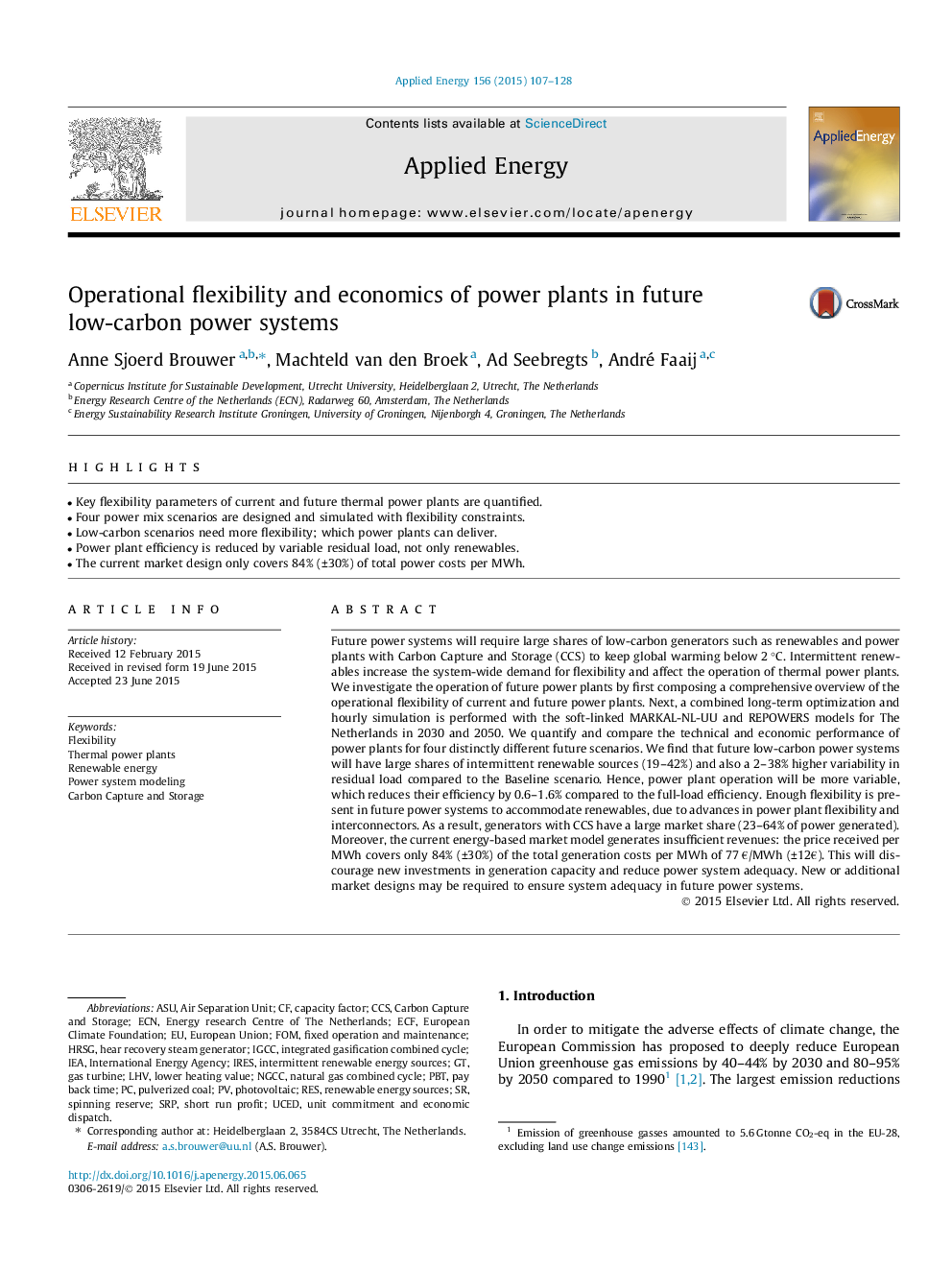| Article ID | Journal | Published Year | Pages | File Type |
|---|---|---|---|---|
| 6686193 | Applied Energy | 2015 | 22 Pages |
Abstract
Future power systems will require large shares of low-carbon generators such as renewables and power plants with Carbon Capture and Storage (CCS) to keep global warming below 2 °C. Intermittent renewables increase the system-wide demand for flexibility and affect the operation of thermal power plants. We investigate the operation of future power plants by first composing a comprehensive overview of the operational flexibility of current and future power plants. Next, a combined long-term optimization and hourly simulation is performed with the soft-linked MARKAL-NL-UU and REPOWERS models for The Netherlands in 2030 and 2050. We quantify and compare the technical and economic performance of power plants for four distinctly different future scenarios. We find that future low-carbon power systems will have large shares of intermittent renewable sources (19-42%) and also a 2-38% higher variability in residual load compared to the Baseline scenario. Hence, power plant operation will be more variable, which reduces their efficiency by 0.6-1.6% compared to the full-load efficiency. Enough flexibility is present in future power systems to accommodate renewables, due to advances in power plant flexibility and interconnectors. As a result, generators with CCS have a large market share (23-64% of power generated). Moreover, the current energy-based market model generates insufficient revenues: the price received per MWh covers only 84% (±30%) of the total generation costs per MWh of 77 â¬/MWh (±12â¬). This will discourage new investments in generation capacity and reduce power system adequacy. New or additional market designs may be required to ensure system adequacy in future power systems.
Keywords
PBTSRPFOMIEARESNGCCECFIGCCLHVECNCCSASUIRESHRSGInternational energy agencyEuropean Unionlower heating valueRenewable energyFlexibilityUnit commitment and economic dispatchGas turbineCarbon capture and storagePulverized coalSpinning reserveCapacity factorPhotovoltaicPower system modelingRenewable energy sourcesIntermittent renewable energy sourcesThermal power plantsair separation unitnatural gas combined cycleintegrated gasification combined cycle
Related Topics
Physical Sciences and Engineering
Energy
Energy Engineering and Power Technology
Authors
Anne Sjoerd Brouwer, Machteld van den Broek, Ad Seebregts, André Faaij,
